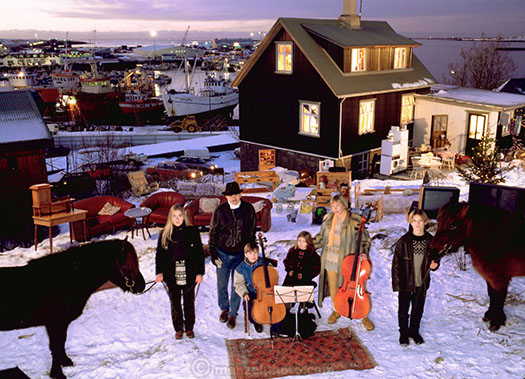A Nordic Nation Establishing its Unique Identity
Media Education
Media education is a somewhat under-researched field in Iceland, as in many other parts of the world. There is, however, a lot of research done on the current implementation of technology in classrooms in Iceland, as well as plans for the future of integrating information and communication technologies (ICTs) into the lives of students. Iceland itself is a very literate country: they have a 99% national literacy rate. They also highly value the arts and want make sure that students are
educated in the arts in schools. "Icelandic education is dedicated to building skills and knowledge in the arts forms, especially visual arts, music, wood craft and textile and to a lesser extent dance, drama, photography and film making," according to a 122 page report by the Ministry of Education, Science and Culture titled "Arts and Cultural Education in Iceland" (Bamford 8, o10).
In this report, there is a distinction made between education in the arts, which involves teaching in fine arts, music, drama, crafts, versus education through the arts, which involves the use of arts as a pedagogical tool in other subjects, such as numeracy, literacy and technology. What we are interested in in this context is education through the arts. In this report, several case studies are done in schools throughout Iceland where different aspects of education are assessed and evaluated. In one study, the school noted that "there is interest for courses related to the arts and technology, like how to use ‘Garage Band’" (Bamford 85). This relates to what we talked about in class about creative production skills. According to this study, the desire to learn is there, however the funding is not. The study does, however, end on an optimistic note, concluding that the high level of support for the arts in Iceland will ultimately lead to a promising future.

This photo comes from Peter Menzel's photo project "Material World: A Global Family Portrait." From the caption on Menzel's website: The Thoroddsen Family posed with all of their possessions in front of their home, Hafnarfjordur, Iceland. Published in the book Material World: A Global Family Portrait, pages 162-163. {{The Thoroddsen family lives in a 2,000 square foot wooden frame house overlooking the harbor in Hafnarfjordur, Iceland (near Reykjavik). Bjorn is a pilot for Iceland Air and Margaret—called Linda—is a milliner. Family members are Björn (Bennie) Thoroddsen, husband of Margret, 57; Margret (Linda) Gunnlaugsdöttir, wife of Björn, 42; Sif Hauksdööttir, Margret’s daughter from first marriage, 18. Gunnlaugur Björnsson, son, 13; Gestur Björnsson, son, 11; Thordis Bjornsdöttir, daughter, 7.}}. i9.
Iceland has a report from 2008-2012 called "ICELAND the E-nation: Icelandic Government Policy on the Information Society" which outlines all of the governmental standards the the country set forth in those years to become a technological and innovative nation (o11). In the report, it is stated that "information technology shall be employed to a still greater extent in education and teaching, and the diversity of education on IT shall be increased significantly. Cooperation between educational bodies and the commercial sector or interest groups shall also be strengthened. The e-citizen shall have wider options for pursuing a variety of studies wherever and whenever it suits her/him" (Prime Minister's Office 12). Having this governmental backing to ensuring that citizens are educated in the use of technology is an important precedent for any real, on the ground change in media education.
One of the best resources for learning about literacy, specifically digital literacy, in Iceland was the "Literacy In Iceland Country Report" produced by the European Literacy Policy Network (ELINET) in 2016 (a2). The report explained exactly what kind of technology is available in school right now (for example, most classrooms have at least one computer and projector). Some schools are introducing the use of tablets in teaching and learning, but it was reported that teachers generally do not use computers in the actual teaching, just in preparing the lesson. In secondary schools, digital devices are booming: policy makers and the education field are connecting the development of these devices to literacy. In a similar way as people spoke in class about technology use in classes, "in upper secondary schools, almost all students have their own laptops or tablets. The use of digital devices very much depends on the individual teacher and his/her interest and the school community as a whole. Tablets are also used in quite a lot of schools" (Árnadóttir 10).
Information technology is part of the national curriculum for adolescents in Iceland, as is digital literacy. "In the National Curriculum for primary and secondary education, there are special chapters with competence descriptions on use of ICT in schools, and what competences students shall gain from the education. There are competences which could be grouped under the use of digital devices and as well as important skills which are under literacy, such as being able to search for information and use critical reading" (Árnadóttir 13). Students are not only learning to be critical (reading and thinking) of sources of media, but also learning how to organize their research using technology.
All of this information comes from the report from 2016. Whether or not these practices are actually implemented in schools is a whole different thing. More research needs to be done on the implementation of these policies and data needs to be published about media education in Iceland, just as it does in the US and many other places in the world.

It was really difficult to find published information on the impact that technology has on family and work life. Clearly Icelanders value the use of technology and place an importance on it in their personal lives; they have the highest number of Facebook users per capita of all countries (according to Catherine Chambers). But in order to understand the true impact that technology and media have on the lives of Icelanders, I decided to to rely on first-hand accounts of how media and technology impact family and work. Here are some of my interviewees' responses to the question:
Q: How does media and technology play a role in family life (children especially)? Work life?
A: As a teacher, I encourage my students to use media to get used to listening to the language and to read current news.
Q: How does media and technology play a role in family life (children especially)? Work life?
A: Media is a talking point in workplaces: what's in the news, the latest major blockbuster television series, etc. Television is also popular among children as education and entertainment--and sometimes as an electronic babysitter.
Q: How does media and technology play a role in family life (children especially)? Work life?
A: I am not sure if I can speak on this but from observations I think, as in America, children are changing and becoming glued to their devices and partaking less in traditional routines.
Q: How does media and technology play a role in family life (children especially)? Work life?
A: I am not completely sure as I don’t have children, but it seems like children spend a lot of time in front of screens, especially using ipads and such. Kids do go outside to play a lot here, and most of their play is pretty much independent and unsupervised. But I have seen a lot of children who seem very distracted and absorbed by technology. In working life, for people working in offices, I get the feeling everyone is spending a lot of work time Facebook. For people working in more manual labor jobs (quite a large proportion outside of the capital area), such in fisheries, agriculture, and such, the technology used is of course more related to these industries.
As for media…RÚV has a news program specifically for children, called Krakkafréttir. Different industries often have their own newspapers, for example the aquaculture sector has its own newspaper.
Q: How does media and technology play a role in family life (children especially)? Work life?
A: Many children I know play with smart phones and watch a lot of TV. Icelanders are often on phones at work, and there are a lot of new initiatives to get people to think about technology addition.
